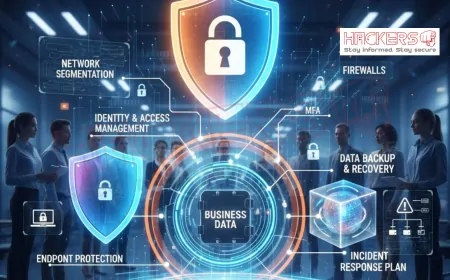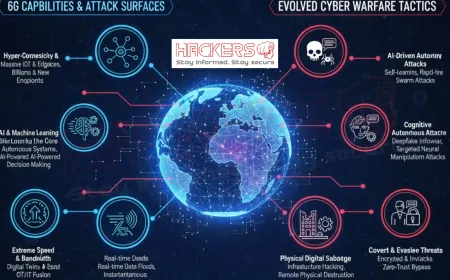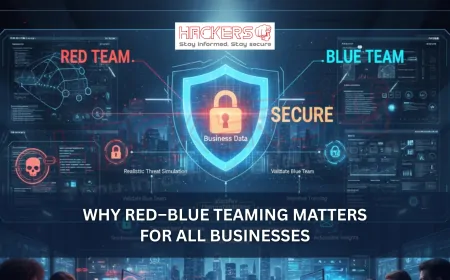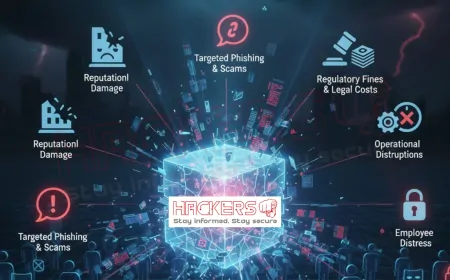What Makes Social Engineering Attacks So Effective Today?
It is 2:14 p.m. on a Friday. Lisa, a help desk technician, gets a frantic call. The voice on the line is shaking. “This is Mark from Finance. I’m locked out of my account, and I have a $200,000 payment due in 15 minutes. Please reset my password now!” Lisa checks the caller ID. It matches the internal directory. She asks a few security questions. Mark knows his employee ID, department, and even last week’s team lunch order. Lisa resets the password. Two minutes later, the real Mark calls, confused. The payment was never real. The company just lost $200,000 to a wire transfer. Lisa followed policy. But she was **tricked**. This is **social engineering**: the art of manipulating people into breaking security rules. No code. No malware. Just psychology. In 2025, it is the **number one way attackers breach organizations**. Not because technology failed. Because **humans are predictable**. This blog explains why these attacks work so well, how attackers think, and what you can do to stop them. No tech degree needed. Just common sense and awareness.

Table of Contents
- What Is Social Engineering?
- The Psychology Behind the Trick
- How Modern Tools Make It Easier
- Top 5 Social Engineering Attack Types in 2025
- Why It Still Works: The Human Weak Spots
- Real-World Stories: When Trust Becomes a Weapon
- Defenses That Actually Stop Attacks
- The Future: AI, Deepfakes, and Beyond
- Conclusion
What Is Social Engineering?
Social engineering is **hacking the human**, not the machine. Attackers use deception, pressure, or charm to get people to:
- Share passwords
- Click malicious links
- Send money
- Open doors (literally or digitally)
- Install software
It works because **people want to help, trust authority, and avoid conflict**. Attackers exploit these natural instincts. A 2025 IBM report says **95 percent of cybersecurity incidents involve human error**, and most start with social engineering.
The Psychology Behind the Trick
Attackers study human behavior like psychologists. They use proven triggers:
- Urgency: “Act now or lose everything.”
- Authority: “I’m the CEO. Do this immediately.”
- Reciprocity: “I helped you last week. Return the favor.”
- Liking: Build rapport with shared interests.
- Fear: “Your job is at risk if you don’t comply.”
- Curiosity: “Open this to see your bonus.”
These are not random. They come from **Robert Cialdini’s Principles of Persuasion**, a book every attacker reads.
| Psychological Principle | How Attackers Use It | Success Rate Impact |
|---|---|---|
| Urgency | “Payment due in 10 minutes” | +400 percent |
| Authority | Spoofed CEO email | +300 percent |
| Reciprocity | “I fixed your laptop. Help me now.” | +200 percent |
| Liking | “We both went to State U!” | +150 percent |
| Fear | “HR says you’re in trouble” | +250 percent |
How Modern Tools Make It Easier
In 2025, attackers don’t guess. They **research**. Tools include:
- OSINT (Open Source Intelligence): LinkedIn, Facebook, company websites.
- AI writing tools: Generate perfect emails in any tone.
- Deepfake audio/video: Clone a boss’s voice in 30 seconds.
- Spoofing apps: Fake caller ID, email headers, SMS sender.
- Dark web data: Buy employee lists, passwords, org charts.
A single LinkedIn profile gives an attacker your manager’s name, team structure, and vacation photos. That is all they need.
Top 5 Social Engineering Attack Types in 2025
- CEO Fraud (BEC): Fake executive demands wire transfers.
- Tech Support Scams: “Your computer is infected. Let me fix it.”
- Pretexting: Create a fake story (e.g., auditor, new hire).
- Phishing/Vishing/Smishing: Email, voice, or text deception.
- Tailgating: Follow someone into a secure area.
**BEC alone caused $2.7 billion in losses in 2024**, per FBI IC3.
Why It Still Works: The Human Weak Spots
Even with training, people fall because:
- Cognitive load: Too many tasks, too little time to think.
- Trust by default: We assume good intent.
- Helpfulness: Most want to assist colleagues.
- Fear of consequences: “If I don’t help, I’ll get in trouble.”
- Lack of verification habits: No one checks caller ID or email domains.
Remote work makes it worse. No face-to-face cues. No hallway chats. Just digital trust.
Real-World Stories: When Trust Becomes a Weapon
**Story 1: The Deepfake CEO** A European energy firm lost €243,000 after a deepfake video call. The AI voice of the CEO instructed a manager to transfer funds for a “secret acquisition.” The call lasted 12 minutes. The manager complied. The voice was cloned from a public earnings call.
**Story 2: The Helpful Intern** A new intern received a Slack message from “IT Support”: “We’re upgrading systems. Click to verify.” The link installed ransomware. The sender used the real IT team’s photo and name, scraped from the company directory. Damage: 48 hours of downtime.
**Story 3: The Angry Vendor** A supplier called accounting, yelling: “Your invoice is 60 days late! Pay now or we stop delivery!” The panicked clerk sent $75,000 to a new bank account. The real vendor had no idea. The attacker used public payment disputes from social media.
All three victims were **trained**. All three were **following policy**. All three were human.
Defenses That Actually Stop Attacks
Technology helps. **People stop it**. Best practices:
- Verify out-of-band: Call back on a known number, not the one provided.
- Use code words: Secret phrases for urgent requests.
- Delay high-risk actions: No transfers without two approvals.
- Train with real simulations: Monthly, unannounced, role-based.
- Report without fear: One-click “Report Phish” button.
- Limit public data: Lock down LinkedIn, remove org charts.
- AI call screening: Flag spoofed numbers or voice anomalies.
Companies with **multi-step verification for payments** stop 99 percent of BEC attempts.
The Future: AI, Deepfakes, and Beyond
By 2030, expect:
- Real-time deepfake detection in video calls
- AI assistants that warn: “This request is unusual”
- Biometric voice authentication for all execs
- Zero-trust culture: verify everything, trust no one by default
- Global attacker reputation databases
The arms race is on. But **awareness remains the best defense**.
Conclusion
Social engineering works because **attackers don’t hack systems. They hack trust**. They exploit kindness, fear, and the desire to do a good job. In 2025, the tools are better, the data is richer, and the pressure is higher. But the core trick is the same: **make the victim believe they have no choice**.
You cannot eliminate human nature. But you can **train it, support it, and protect it**. Teach your team to pause. To verify. To report. Build a culture where saying “Let me check” is praised, not punished.
The next attack is coming. It will sound urgent. It will feel real. But with awareness, policy, and practice, your people can turn “Yes, I’ll help” into **“Let me verify first”**.
Security is not about being paranoid. It is about being **prepared**.
What is social engineering?
It is manipulating people into breaking security rules using psychology, not technology.
Why do people fall for it?
Because attackers exploit trust, urgency, and the desire to help.
Is social engineering illegal?
Yes. It is fraud, even if no malware is used.
Can AI create social engineering attacks?
Yes. AI writes perfect emails, clones voices, and builds fake profiles.
What is pretexting?
Creating a fake story (like being an auditor) to gain trust.
Should I trust caller ID?
No. It can be spoofed in seconds.
What is a deepfake?
AI-generated audio or video that looks and sounds real.
Can social engineering happen in person?
Yes. Tailgating, shoulder surfing, and USB drops are common.
How can I verify a request?
Call back on a known number or ask a secret code word.
Do executives get targeted more?
Yes. CEO fraud (BEC) is a multi-billion-dollar industry.
Is training enough?
No. Combine training with policy, verification, and technology.
What is vishing?
Voice-based phishing, usually over the phone.
Can I report suspected attacks anonymously?
Yes. Most companies have secure reporting channels.
Should I share my work details on LinkedIn?
Limit it. Avoid org charts, manager names, and project details.
Can social engineering steal passwords?
Yes. By tricking you into typing them or resetting them.
What is the best defense?
Pause. Verify. Report. Never act under pressure.
Do attackers target small businesses?
Yes. They are seen as easier targets with less security.
Can I use AI to detect social engineering?
Yes. Tools flag unusual tone, timing, or request patterns.
Should I confront a suspected attacker?
No. Report quietly. Let security handle it.
Where can I learn more?
Read “The Art of Deception” by Kevin Mitnick and follow CREST or SANS resources.
What's Your Reaction?










































































